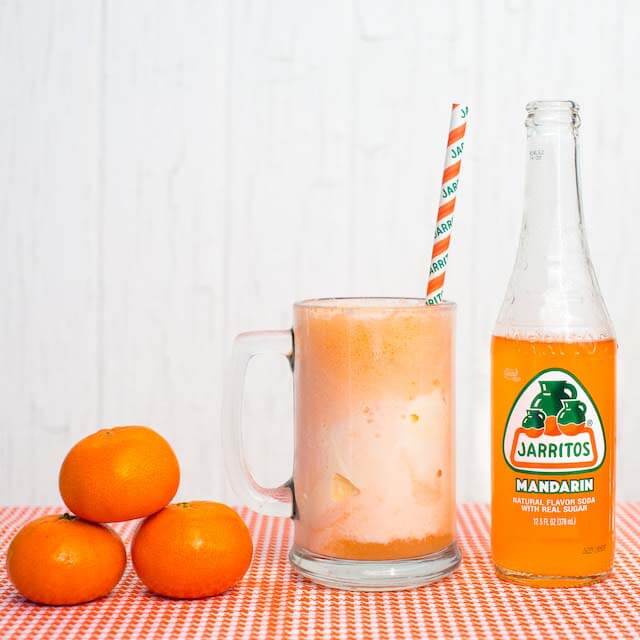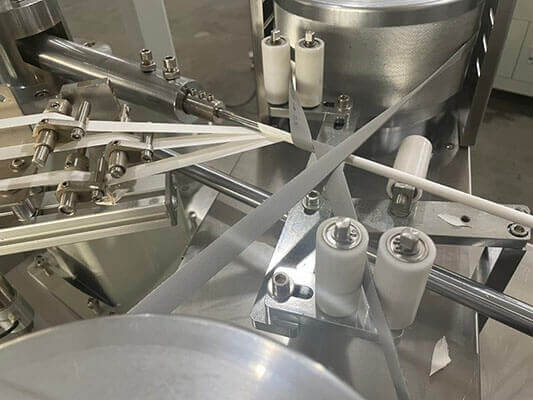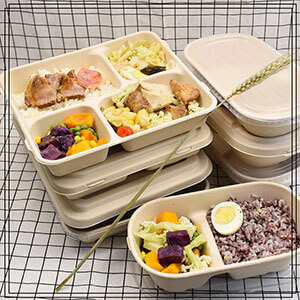All You Need to Know about Paper Straws

- How was the First Paper Straw Created?
- What is a Paper Straw?
- How to Make Paper Straws?
- What Should Be Considered in The Production of Paper Straws?
- What Determines the Inner Diameter of A Paper Straw?
- The Function of Tube Winder Belts of Paper Straw
- Paper Straws vs. Other Straws
- The Pros and Cons of Paper Straws
- What Factors Affect the Quality of Paper Straws?
- The Glue Used in the Paper Straw
- Food-grade Ink for Paper Straws
- Customization Options for Paper Straw
- What are the Common Types of Paper Straws Found in the Market?
- How Many Layers Does the Paper Straw Have?
- The Packing Used for Paper Straws
- What’s the Application of Paper Straws?
- FAQs about Paper Straws
The reason why paper straws are widely spread in the market is because plastic pollution is becoming more and more serious. A large number of plastic straws and plastic packaging are accumulated in landfills, floating on the sea, piled on beaches, or sinking to the bottom of the sea. This is not only bad for the environment but also harms marine life. Therefore, paper straws, an alternative to plastic straws, have become increasingly popular in the market. Especially in the European and American countries, they have very strict control over the use of plastic packaging products and plastic straws, so paper straws have naturally entered the lives of thousands of households.
How was the First Paper Straw Created?
The first paper straw was created in 1888 by an American cigarette merchant Marvin Stone, the idea came from his cigarettes. Before his creation, this drinking straw was made of plant stalks, 4000 B.C. people were using this straw for drinking, but it broke easily and was very unhygienic.
The first bendy paper straw was created in 1937, an American inventor Friedman inserted a screw into one end of a paper straw and then pressed out the screw corrugation from the outside of the straw. After the screw was pulled out, the corrugation part can be bent.
What is a Paper Straw?
Paper straw is an environmentally friendly utensils that is used to sip beverages. The material of paper straw is food-grade eco-friendly paper, which is biodegradable and compostable. The size, design, pattern, and paper layers of paper drinking straws can be customized according to your specific request.
Eco March is a professional manufacturer of paper straws in China and our straw size diameter ranges from 6mm (0.24’’) – 13mm (0.5’’). We accept your customized requests in different sizes, various patterns, multiple styles, etc. Don’t hesitate to contact us to get your ideal drinking straw to boost your business!
How to Make Paper Straws?
Nowadays, there are 2 types of paper straws in the market, they are glue-free paper straws and paper straws with adhesive, their difference lies in the distinct manufacturing technique. For users, it is difficult to distinguish them visually.
Manufacturing Process of Glue-Free Paper Straws
- Choose the paper with the customer’s favorite pattern or print the pattern with food grade ink on white paper.
- Slitting the wide paper to narrow paper, which is the size that fits customer needs.
- Holding the paper reels on the paper stand.
- The paper from each paper reel will come into a heating system which is the heat-sealed technology to strengthen the bond between paper.
- Then few layers of paper will be wound together into a long paper cylinder by passing through the tube winder belts.
- Cutting the straw length according to the customer’s request.
- Packing the paper straws in the way that your clients require.
Manufacturing Process of Paper Straws with Adhesive
- Choose the paper with the customer’s favorite pattern or print the pattern with food grade ink on the white paper.
- Slitting the wide paper to narrow paper, which the size fits customer needs.
- Holding the paper reels on the paper stand.
- The paper comes into a glue tank, the glue is water-based food grade adhesive.
- Then few layers of paper will be wound together into a long paper cylinder by passing through the tube winder belts.
- Cutting the straw length according to the customer’s request.
- Sending these straws to the drying room to dry excess moisture.
- Inspect and packing the paper straws in the way that your clients require.
As you can see, the two ways are slightly different in bonding technique, you can choose whatever you want.
What Should Be Considered in The Production of Paper Straws?
Before Production:
Cleaning: Prior to the mechanical operation of paper straw production, it’s necessary to open the packaging inside the equipment and remove any anti-rust agents, accumulated dust from storage, and residual impurities post-processing. Ensure the interior remains clean and organized to maintain subsequent operations’ stability accordingly.
Lubrication: Firstly, it’s crucial to clarify that lubrication procedures must occur after the cleaning process, and lubrication should only take place when the interior of the paper straw machine is in a tidy condition. Moreover, the oil used for lubrication must undergo testing and should only be used when meeting the specified requirements. Once filtered, the lubricating oil is added to the designated oil position inside the equipment.
Inspection: Before using any paper straw machine, a comprehensive check of the internal components is necessary. If any parts are damaged or broken, they should be replaced promptly to ensure the stability of the machine during subsequent operations.
During Production:
- Select raw materials that meet the standards for production, including paper, glue, ink, and so on.
- Keep the workshop hygienic and well ventilated. Employees should do a good job of cleaning to avoid cross-contamination.
- When using the paper straw cutting machine to cut items, it’s essential to consistently adjust the inner blades and keep them in a stable state. Once the items are secured, regular paper straw production can commence.
- During paper straw production, never allow the rotating parts of the machine to come into contact with any part of the body. This is extremely dangerous.
- During the paper straw production process, reducing the machine’s operating speed appropriately can effectively decrease equipment wear and significantly prevent some mechanical losses during operation.
- If the paper straw machine equipment fails during the production process, the equipment needs to be stopped immediately. Remember not to leave the device running as this can easily cause damage to the device. Do not perform maintenance on the equipment while the equipment is powered. Not only could this be dangerous to humans due to the device’s internal transmission components, but it could also result in electric shock. Therefore, you first need to stop the equipment, turn off the power, and find professionals who have a certain understanding of the equipment to perform repairs to ensure safe repairs.
- During the production process, it’s necessary to sample each batch of paper straws for testing to confirm compliance with standards.
- Packing as per customer requirements and storing in an open, well-ventilated, dry area, away from a heat source.
What Determines the Inner Diameter of A Paper Straw?
At the forming part of the paper straw machine, when multiple layers of paper wound together, there is a rotating shaft, your paper straw is forming by the rotating shaft. The outer diameter of the rotating shaft determines the inner diameter of the paper straw.

The Function of Tube Winder Belts of Paper Straw
Do you know the function of the tube winder belt at the beginning of the paper straw machine? They are very important to the initial roll-up and positioning of paper straws, ensuring production line stability, and making the paper straw manufacturing process more efficient and precise.
Belt Material: Nylon+ wear-resistant rubber
Belt Thickness: From 1.0mm-6.0mm
Applicable temperature: From -20℃ to 80℃
Features: Anti-slip, wear-resistant, strong tensile strength, not easy to deform
Paper Straws vs. Other Straws
Paper Straws:
- Biodegradable and very environmentally friendly.
- Suitable for various beverages, but only can hold 2-3 hours.
- Can be customized in different sizes, colors, and patterns.
- One-time use, low cost.
Plastic Straws:
- Durable, but not eco-friendly, harmful to our environment.
- Suitable for various beverages.
- One-time use, lower cost than paper straws
PLA Straws
- Suitable for both hot and cold beverages.
- Eco-friendly, but needs 100-1000 years to decompose.
- One-time use, cheaper than paper straws.
Metal Straws:
- Durable, and eco-friendly, but need more sources to produce.
- Sensitive to temperature and easy to harm the mouth.
- Not easy to clean, and easy to breed bacteria.
- Can be reused, but high production cost.
Glass Straws:
- Eco friendly, suitable for various beverages.
- Transparent and beautiful, allowing the color of the drink to be seen at a glance.
- Not easy to clean, and easy to breed bacteria.
- Not sturdy, easily damaged, and requires careful storage.
- Can be reused, but high production cost.
Silicone Straws:
- Soft, durable, and eco friendly.
- Food grade materials are non-toxic and harmless.
- Easy to carry.
- Suitable for various beverages.
- Not easy to clean, and easy to breed bacteria.
- Can be reused, but higher cost than paper straws.
The Pros and Cons of Paper Straws
Paper straws are always the primary alternative to plastic straws, environmentalist loves to use them, but still, some consumers dislike them.
Pros:
Environmentally Friendly: Paper drinking straws are degradable and have less impact on the environment than plastic straws.
Renewable Materials: Most paper straws use renewable pulp or paper as raw materials, which is great for our environment.
Fight against Plastic Pollution: Using paper drinking straws daily to fight against plastic pollution is what we can do.
Customizability: The cardboard can be customized with various customer patterns with food contact ink.
Cons:
Lifespan: Not fit for long time use, normally you can use the paper drinking straw for around 3 hours in cold drinks.
Resource Consumption: Need more water and resources to produce the paper.
Cost: The raw material of paper straws cost more than plastic straws.
Stability and Functionality: It is not like plastic straws, the straw made of paper will get soggy after a few hours, but plastic always maintains its shape.

What Factors Affect the Quality of Paper Straws?
Paper Quality: The quality of paper straws relies on the paper quality. Using high-strength and high-density paper provides better durability and moisture resistance.
Layers: Multi-layer paper straws are stronger and more durable than single-layer paper straws.
Manufacturing Process: The ink quality, glue quality, drying technique, technology of sterilization, etc. All these are important parts to affect straw quality.
Environment and Conditions of Use: Use in hot drinks will soften faster than cold drinks.
The Glue Used in the Paper Straw
The glue used in the paper straw is water based adhesive. It features environmental friendliness, non-toxicity, rapid evaporation of water content, quick initial adhesion, fast curing speed, and heat resistance. The most widely used brands for adhering paper straws are: Henkel, 3M, Bostik, and Dow Chemical.
Food-grade Ink for Paper Straws
The water-based ink refers to ink where water is the primary solvent carrying the pigments. They are mainly composed of acrylic resin or a mixture of acrylic resin and polyurethane. They are widely used in the printing of food packaging and can directly contact food, but cannot be eaten directly.
Customization Options for Paper Straw
Size: Different paper drinking straw sizes fit different types of drinks. Different lengths of straw fit for different sizes of cups.
Layers of Paper: You can customize different layers of paper straw according to your needs or your market request. There are one-layer, two-layer, three-layer, four-layer, and five-layer paper straws on the market now, among which three-layer and four-layer are the most common.
Types: There are different types of paper straws, such as straight straws, bendable straws, straw with flat ends, straw with sharp ends, straw with spoon ends, etc.
Patterns: You can customize your desired patterns of the paper straws from the manufacturer.
Packing: You can customize the straw packing according to your specific needs.
What are the Common Types of Paper Straws Found in the Market?
Straight paper straw: Straight paper straws (flat end and sharp end) are the most common type of paper straws on the market. They can be designed into various sizes to fit different beverages, such as water, coffee, tea, bubble tea, milkshake, etc.
Bendy paper straw: Bendable paper straw (flat end and sharp end) is more flexible due to its design. It is very suitable for the elderly, children, and the sick, no need to tilt the cup to drink beverages.
Paper spoon straw: Paper spoon straw design combines the features of a straw and a spoon, one end is a traditional straw design, and the other end is in the shape of a spoon. This kind of straw also can be regarded as smoothie straw and milkshake straw.
How Many Layers Does the Paper Straw Have?
Typically, paper straws come in two-layered, three-layered, four-layered, or five-layered varieties (the number of layers in a paper straw can be customized based on requirements). The most common variant we encounter is the three-layered paper straw. It’s wound by three layers of paper with different weights. Generally, these three layers consist of an outer paper weighing 60 grams, a middle layer of 120 grams, and an inner layer of 120 grams. The innermost layer of paper needs to have good waterproof properties. Customization according to personal or market demands is also available.
The Packing Used for Paper Straws
You can see 3 main ways to pack paper straws in the market, they are OPP bag packing, paper box, and individual wrappers.
Opp Bag Packing
OPP bag features high transparency, wear resistance, and moisture resistance. Pack the paper drinking straw into the bag is very suitable to sell to shops, restaurants, and other wholesalers, because this bag is easy to use, and allows your customer to see the straw pattern.
Paper Box
Using the paper box to pack the bulk paper straws is suitable for the sales channel that focuses on brand image and environmental protection concepts. You can open a show window on the bow to showcase your product. This packing also allows you to print logos, brand names, and some other personalized patterns to increase recognition.
Individual Wrapper
The individual wrapper material for paper drinking straws is always paper which is eco-friendly to the environment. This packing method is very hygienic, easy to use, and allows you to print your personalized logo, company name, slogan, and some other patterns on the paper straw wrapper.
What’s the Application of Paper Straws?
Paper straws can be designed into different types, patterns, and sizes to fit different types of beverages, such as water, fruit juice, coffee, tea, milkshakes, smoothies, cocktails, vegetable juice, milk, etc. They are widely used in restaurants, shops, cafes, dessert shops, cafeterias, hotels, schools, hospitals, parties, etc.
FAQs about Paper Straws
Q: If I want to produce paper straws, how can I choose the machine?
A: Paper straw machines can be chosen for different efficiency. Like in the paper straw cutting part, you can choose with a single cutting knife, double cutting knives, or multiple cutting knives. Nowadays, most large-scale production enterprises are using 8 cutting knives or 9 cutting knives paper straw making machines. Machine capacity, machine speed, and machine efficiency depend on each specific machine manufacturer.
Q: Why do paper straws get soggy so easily?
A: Normally our paper straw can last 2-3 hours in cold drinks, if your straw gets soggy very quickly, this is because you bought the bad quality one. For example, the glue we use in paper drinking straws is around USD4000/Ton, but as we know, some suppliers use glue that only costs USD1000/Ton or maybe lower. Contact EcoMarch to get the best paper straws to support your drinking business more strongly!
Q: Are paper straws more expensive than plastic straws?
A: Yes, from material selection to the entire production process, all the costs of producing paper drinking straws are higher than making plastic ones. Their price is dependent on different manufacturers and different material selections. In general, plastic straws cost around 0.5 cents, and paper straws cost around 2.5 cents.
Q: Can Paper straw used in hot beverages?
A: It is better not, hot drinks will shorten straw life.
Q: Are paper straws really bad for your health and environment?
A: The newest search mentions that paper straw contains PFAS chemicals and is bad for the environment. This is also related to straw quality, contact Eco March to get the best paper straws.
Q: Which is the best straw for children and the elderly?
A: Definitely, the bendable paper straws. Our bendy paper straw is easy to use, flexible, eco-friendly, sturdy, no color fade.
Finding qualified paper straws for your consumers is good for their health and helps to protect the environment. Although there are many rumors outside, understanding much more about the things itself will help you to distinguish right from wrong, and get your desired paper straws from Eco March to boost your business to a new height!

John Q
John Q is Eco March’s Product Manager. With 5 years of prior experience in the food industry after graduating from university, he has been an integral part of Eco March. He excels in creating and developing eco-friendly food packaging products with a keen focus on enhancing the consumer experience.


